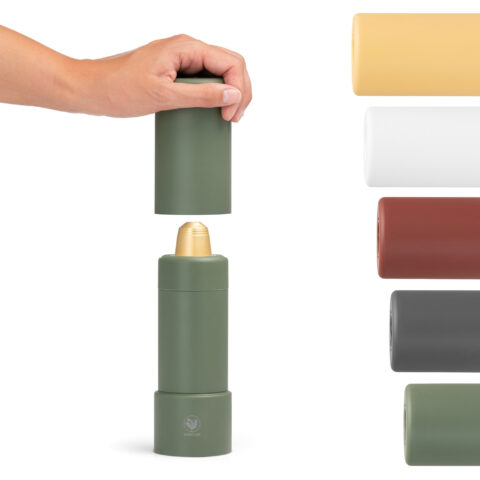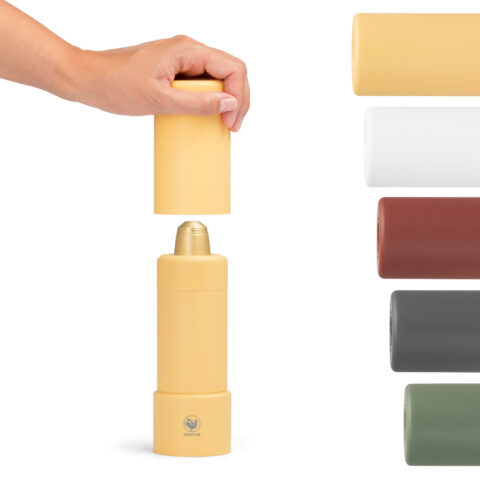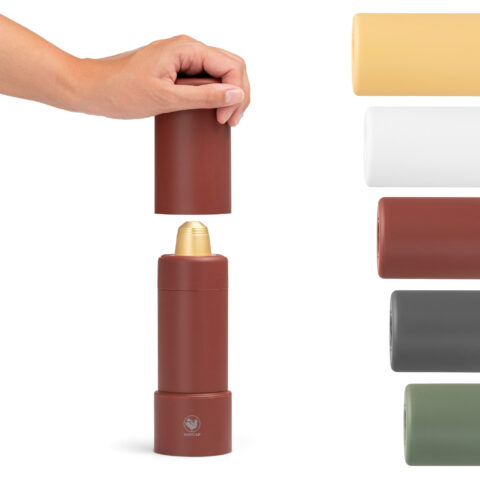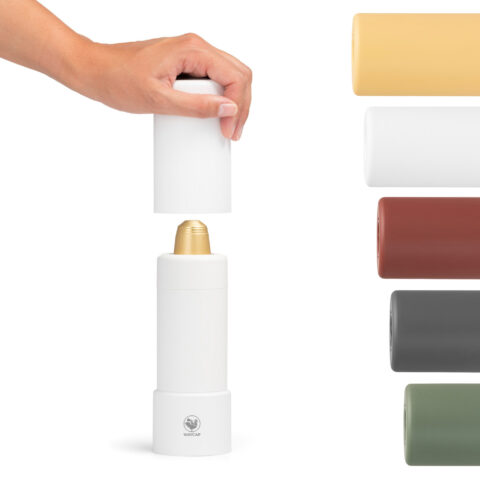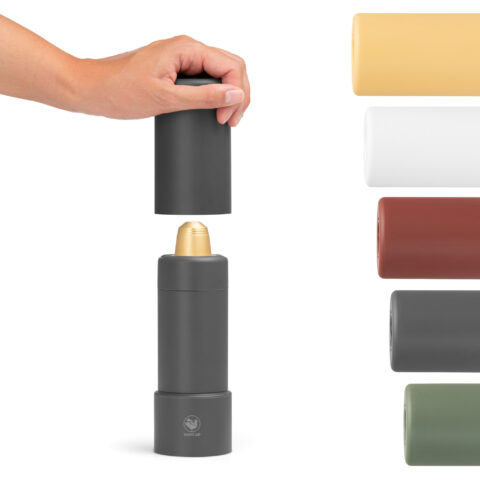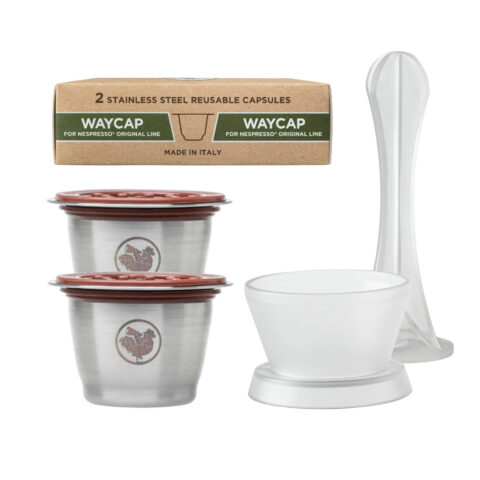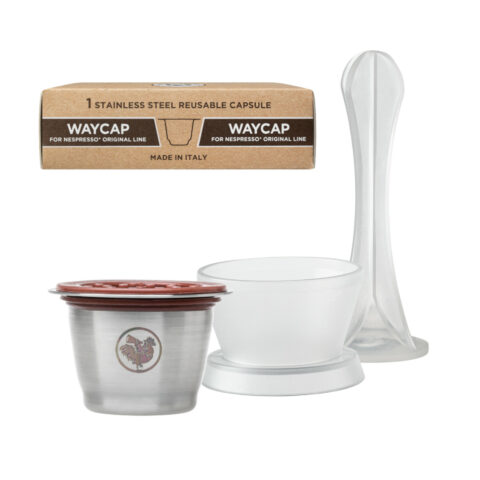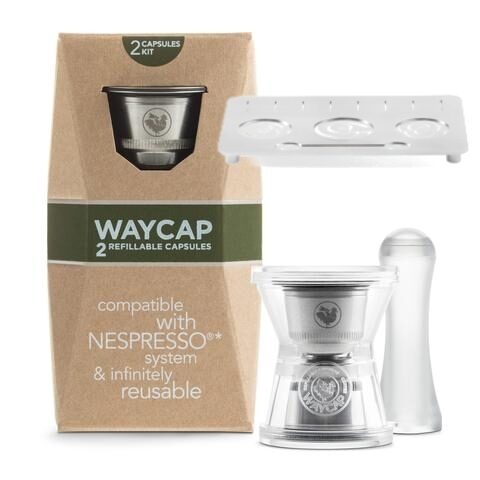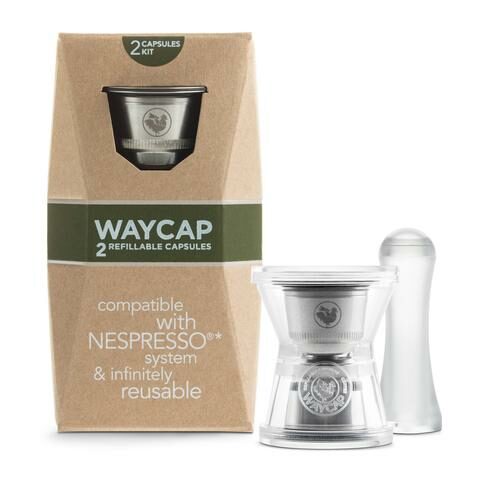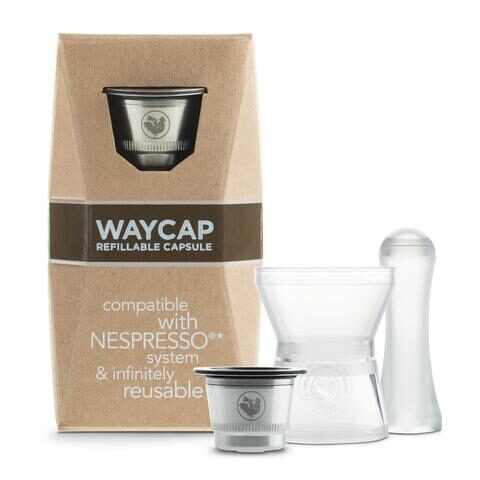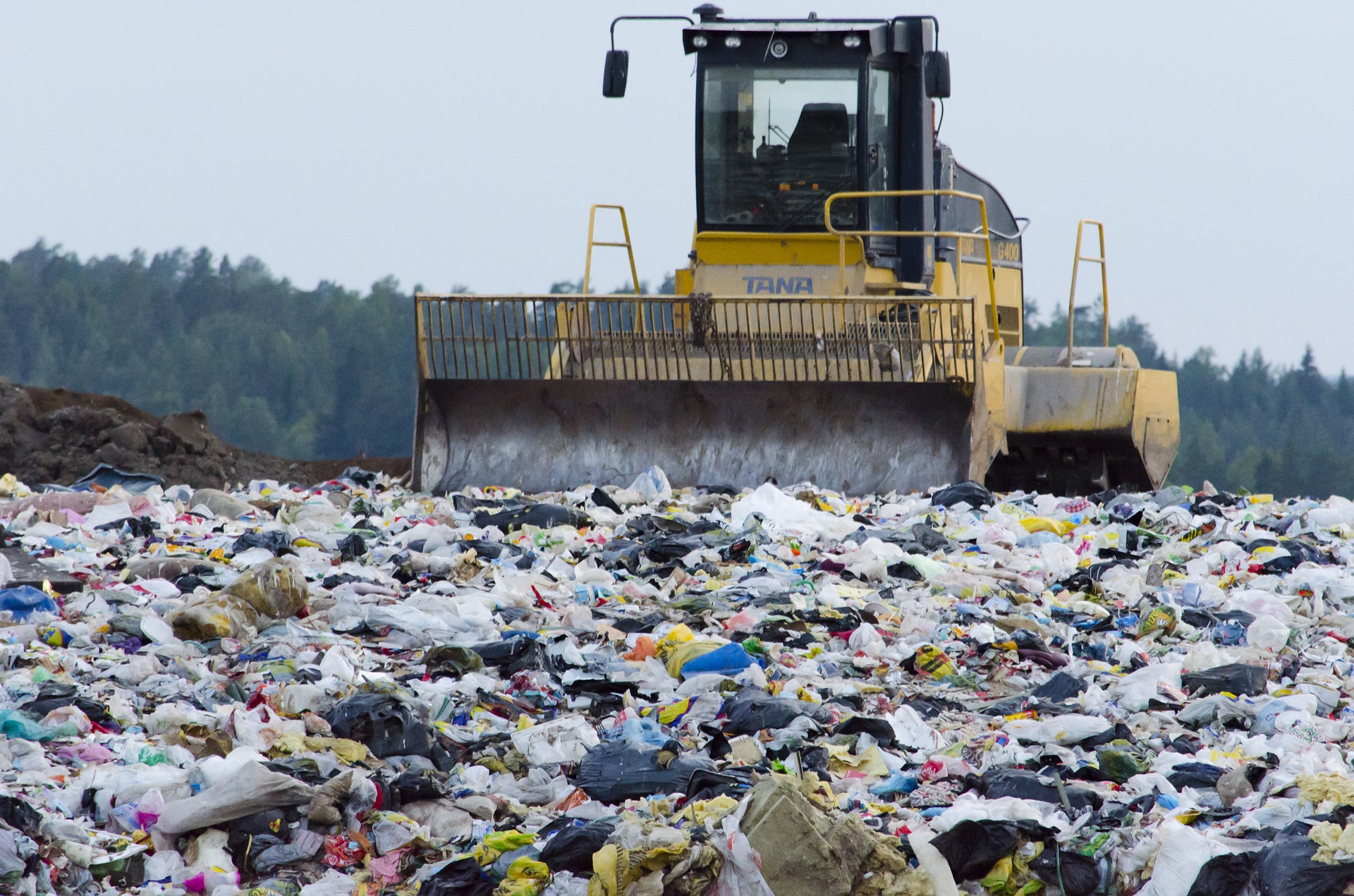
“It’s like a cigarette for coffee, a single-serve delivery mechanism for an addictive substance,” said John Sylvan, the co-inventor of Keurig more than 30 years ago, explaining the appeal of single-use coffee capsules. “I feel bad sometimes that I ever did it.”
Convenience, ease of use and consistency are surely the reasons for coffee capsules enormous success. You pop your capsule into the machine, a few seconds later you enjoy your coffee. You throw it away without thinking twice about it.
But in the past decade people have become more conscious about the environmental impact of their habits and the coffee capsule industry has come under scrutiny.
In 2014, a video titled “Kill the K Cup” came out and caused an uproar against Keurig. A parody of Hollywood alien invasion movies, it criticised the volume of unrecyclable capsules produced by the American company the previous year, which it claimed, could encircle the Earth 10.5 times.
How many coffee pods are sold each year?
Keurig Green Mountain sold around 13.2 billion capsules in 2018 alone, according to Statista. 2015 was the last year public data was available for the company, which had sold 10.5 billion units in the previous year.
Other leading players are Nestlé (Nespresso and Dolce Gusto) and JDE (Tassimo, L’Or, Senseo). Finding official numbers on how many units are produced and sold each year is increasingly difficult nowadays and mostly based on data from research companies. In fact, Nespresso’s last official data was released in 2012. By then it had sold 27 billion single-use capsules worldwide.
Since 1986, when Nespresso invented the first coffee pod, the single-serve capsule business has flourished constituting 34% of the entire coffee sales (Euromonitor, 2014). 41% of Americans own a single-serve brewing system today. And even though the golden age of coffee capsules has passed – between 2011 and 2016 the market had seen an average annual growth of 18% – the business is still projected to grow by 5% each year by 2021.
The price of convenience
The incredible success of coffee capsules and pods has spread throughout homes despite its costly nature, and consumers might not even realise it.
How do people drink coffee around the world? Read about coffee rituals and traditions
Containing around 9 gr of coffee, one of the cheapest and most popular K-cups is Green Mountain Breakfast blend selling at about 0,62$ per cup. That means that 1kg of coffee comes at a price of around 68$. But for more expensive ones the price can reach just under 100$.
And the coffee in Nespresso can cost even more. At 0,71$ per cup, Nespresso’s Original Line Espresso capsules can make you spend 140$ for 1kg of coffee.
Compared to some of the most expensive ground coffee supermarket brands available like Illy, which cost around 30$/kg, the price of coffee in capsules is twice or even more than 4 times higher.
One could argue that it is literally the price of convenience and of a freshly-brewed cup at home thanks to the small air-tight containers. However, those little containers, used once and discarded, are exactly what’s wrong with the system.
Even companies who produce them know it by now and have tried to put systems in place to circumvent the issue. Their major strategy is recycling. But what’s wrong with that?
Let’s have a look at the major approaches.
Keurig Green Mountain
Until 2016, Keurig’s capsules were almost impossible to recycle.
Firstly, they were composed of four different layers of materials which needed to be separated and sorted accordingly. Secondly, one of the materials was #7 plastic, a mixed plastic polymer, which is harder to recycle and to make into new products.
So in 2016, Keurig started producing plastic #5 pods and, by 2020, all their pods should be recyclable. On their website, they explain the process in three “easy” steps: peel away the foil, empty the capsule, throw it in the bin.
But there’s a catch!
Every time they write the word recyclable on their page there is an asterisk next to it that leads to the phrase “please check locally. Not recycled in all communities.”
There are three big problems with their approach.
- Most municipal collecting and sorting plants are not designed to work with such small objects, but rather with cans and similar. This applies to all capsules in general and not just Keurig’s. So, unless they’ve got specific systems in place, they’ll mostly end up in landfills.
- Unless the capsule is thoroughly cleaned of organic material, it’ll add contaminants to the recycling process, making it ineffective (they might end up in landfills) and more costly, weighing mostly on taxpayer’s money. “We’re committed to continuing working with them and trying to find a solution, but telling people something is recyclable when it’s not accepted in the recycling program is just making the (contamination) problem worse right now,” says Jim McKay, Toronto’s city official in charge of recycling.
- All this means that a big part of the responsibility is still left to the consumer. But if one of the most appealing aspects of single-use pods is that it allows the consumer to be “lazy”, can industries really rely on their average customer to put in the time and effort to make recycling effective?
Other companies are trying to lift the burden off the consumer’s shoulders. Or at least giving them the illusion that it is so.
Nespresso
Setting aside Nestlé’s Dolce Gusto capsules which are made out of plastic and for which the same problems mentioned above apply, Nespresso has put in place a recycling programme for its aluminium capsules (like Original Line and Vertuo) in 44 countries.
In 6 of these, consumers can dispose of the capsules in their recycling bins. In 15 countries they can ship them off back to Nespresso through the postal system for free. Otherwise there are 122 287 collection points worldwide where you can drop off the used capsules.
There is no need to empty or wash out the capsules, you just throw them as is. In theory, not a bad scheme. Unless you live in one of the countries where you need to drop off the capsule at a collection point and they’re not very close to your home.
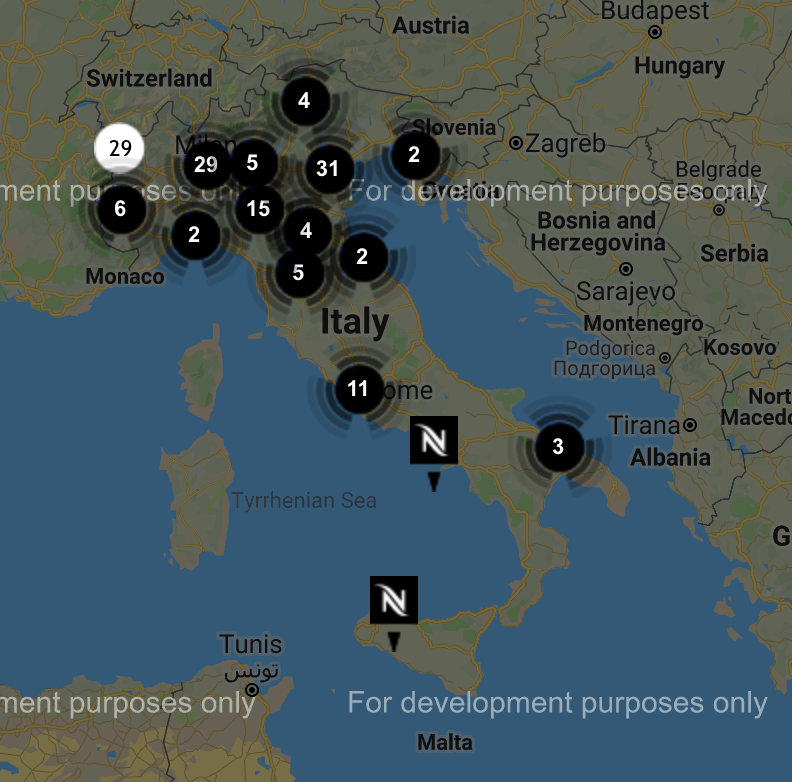
As you can see from the map indicating collection points in Italy, while there might be a higher concentration in the North and around big cities, if you’re living in the provinces of the South you might just end up disposing of them in your general waste bin.
So, how effective is Nespresso’s recycling programme?
While Nespresso focuses on its potential capacity to recycle, which is 86% worldwide, its recycling numbers are much lower.
In 2017, Nespresso “valorised” 56% of their used capsules. That means, first of all, that 44% of their capsules end up in landfills. Of the collected capsules, some are used in energy production, only 24.6% are actually recycled. While the coffee is used to produce heat, biogas and compost, most of the recovered aluminium is used in other various projects.
And that is another problem with their system.
Aluminium is a great material because it is potentially infinitely recyclable. But Nespresso doesn’t use recycled aluminium for their capsules. They claim that their capsules require a “specific alloy of aluminium”—alloy 8011 that is not found in recycled aluminium and one of the only sources are recycled Nespresso capsules.
Yet, they don’t use their recovered capsules to create more. They only promote a circular approach when it “makes environmental and economic sense”. Since they started testing the feasibility of a capsule-to-capsule approach in 2015 they’ve produced 10 million capsules (let’s say they produced 10 bn capsules that same year, that would be just 0.1%).
Thus, most of their aluminium comes from virgin material. And while recycled aluminium is quite easy to recycle, ore extraction is highly energy intensive, consuming incredible amounts of water, electricity and resources.
In the US, half of the electricity consumed in the smelting process comes from coal, one of the most polluting fuel sources known to mankind, reports RecycleNation. Extraction of raw bauxite also means reducing native vegetation thus causing loss of habitat and biodiversity, while contributing to soil erosion. Toxic materials from processing also end up in aquifers compromising water quality. High amounts of greenhouse gas (likecarbon dioxide, perfluorocarbons, sodium fluoride, sulfur dioxide, polycyclic aromatic hydrocarbon) are also released during smelting and processing.
And while Nespresso has made a pledge towards sustainable aluminium sourcing, the use of virgin aluminium still uses 95% more energy than recycling it.
So, on the one hand, despite the company’s efforts, almost half of the capsules sold keep ending up in landfills either due to gaps in their collection system or in the inherent “laziness” of their typical customers. On the other hand, the single-use approach is still making use of invaluable energy and resources which could be avoided.
To bypass all these issues, many companies have turned to producing compostable and biodegradable capsules, which come with their one problems.
Compostable and biodegradable capsules
First off, let’s get the terms right.
Biodegradable refers to any material that will disintegrate in water, soil or air over time with the help of organisms like bacteria and enzymes. This can happen in a short time or it can take years.
On the other hand, compostable also refers to something that breaks down in nature, but it has to increase the nutrient levels of the soils. It also has to disintegrate quite quickly and at the same rate of the other materials which are being composted.
“But there is currently no legal requirement for how long this decomposition should take, only an industry standard set by the American Society for Testing and Materials. It stipulates that materials must break down completely in six months or less in a commercial compost facility,” TheGuardian reports. And there is only one company which releases compostable certifications in the United States.
So, even if it says so on the box, your biodegradable capsules might still be a problem. Some might not be compostable at all, some might be compostable in processing plants but not in at-home composting, needing specific conditions of heat and humidity. And some might not be processed completely by your city’s particular processing system.
The same can be said from biodegradable plastic which is not recycled with normal plastic, something that can generate confusion in the consumer who might end up throwing it in the wrong bin.
So what’s the solution?
Ditch single-use
As we have seen business models which depend on single-use (plastic or other) focus on recyclability as a solution to the incredible quantity of materials they sell. Materials which need to be extracted, processed, produced, shipped, collected and recycled consuming enormous amounts of energy and resources, while creating pollution and often weighing on the public system and on the taxpayer’s money, even when they work. Which they rarely do.
There are some alternative options for at-home espresso making like reusable capsules that handle the problem at the source by producing little or no waste: some have removable plastic or sticker lids to throw away; others, like Waycap, are long-lasting and leave behind no refuse except for the spent coffee grounds.
Sure, they take a little time and effort to fill and clean. However, this might not be more of a hassle than accurately emptying single-use capsules for effective recycling, or shipping them back or taking them to collection points.
And while of course the price of a refillable capsule is higher than that of single-use capsules when you buy them, the first might be more cost effective in the long term when you compare the price of loose coffee with the price of coffee in pre-packaged pods.
In the end, everyone will find the most appropriate solution for their needs based on their priorities, whether it’s time, convenience or price. But at this point in time we can’t avoid factoring into our choices the environmental impact of our habits and to make ecologically sound decisions we need to admit that there needs to be a radical reduction of single use products worldwide.
For Greenpeace, the solution needs to be “a shift away from throwaway dependant modes towards a new business model that priorities the reduction of raw material needs, through alternative product designs and long-living and reusable products.”
That is the sustainability of the future.

